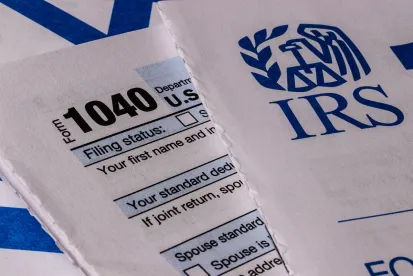Last year, in response to the COVID-19 pandemic, the United States Congress and the Puerto Rico Department of Treasury (Hacienda) granted favorable tax treatment to coronavirus-related distributions (CRDs) and participant loans from U.S.-qualified plans and Puerto Rico-qualified plans, respectively. Recently, both jurisdictions extended similar tax treatment to certain distributions, hardship withdrawals, and plan loans related to non-COVID-19 disasters.
U.S. Disaster Relief Rules
Section 302 of the Consolidated Appropriations Act (CAA), 2021 provides special tax relief to make it easier for participants to access funds from their tax qualified retirement plans to recover from disaster losses. Under the CAA, a “qualified disaster area” is defined as any area where a major disaster is declared by the president under the Stafford Act between January 1, 2020, and February 25, 2021, if the incident period begins between December 28, 2019, and December 27, 2020. The “incident period” is the “period specified by the Federal Emergency Management Agency as the period during which the disaster occurred.” A qualified disaster area does not include an area where a major disaster has been declared solely because of the COVID-19 pandemic and that the CAA does not extend the now expired CRD and loan relief provided under the Coronavirus Aid, Relief, and Economic Security (CARES) Act.
Under the CAA, a plan participant is considered a “qualified individual” eligible for relief if the participant’s principal residence is located within a qualified disaster area at any time during the incident period and the participant experienced an economic loss due to the disaster.
Plan sponsors are not required to adopt these disaster relief provisions. plan sponsors that do choose to adopt some or all of the CAA’s relief provisions may initially administer their retirement plans in compliance with provisions without first amending their qualified plan documents; however, plans must be amended to reflect the relief provisions by the end of the plan year beginning on or after January 1, 2022 (i.e., December 31, 2022, for calendar plan year plans).
Qualified Disaster Distributions
A qualified retirement plan can allow a qualified individual to take a qualified disaster distribution (QDD) up to an annual maximum of $100,000 (reduced by the amount of the participant’s previous QDDs). A QDD must be made on or after the first day of the incident period and must be completed by June 25, 2021.
Similar to CRDs under the CARES Act, QDDs are exempt from the 10 percent excise tax that ordinarily applies to early distributions from qualified retirement plans. Also, the participant may elect (1) to include the QDD in taxable income ratably over the three tax years beginning with the year of distribution and/or (2) to repay the QDD, either totally or partially, to the original plan, another employer’s qualified plan, or an individual retirement account (IRA) that accepts rollovers, at any time during the three-year period beginning on the day after the date on which the QDD was made. QDD repayments are treated as tax-free rollovers.
Loan Relief
A plan sponsor can also choose to increase the maximum limit on a loan made to a qualified individual to the lesser of $100,000 or 100 percent of the participant’s vested account balance.
A qualified individual may be permitted to delay repayments on outstanding plan loans due during period between the first day of the applicable incident period and 180 days after the end of the incident period. These repayments may be delayed for up to one year or, if later, to June 25, 2021, even if the new repayment period exceeds the regular five-year term limit on non-residential plan loans. Subsequent repayments, however, must be adjusted to reflect the delay and any interest accrued during the delay.
Hardship Withdrawal Recontributions
A participant who has requested a hardship withdrawal to access funds to purchase or construct a principal residence within a qualified disaster area may recontribute all or part of a hardship withdrawal to the original plan, another employer’s qualified plan, or an IRA that accepts rollovers if the money was not ultimately used for the residence purchase or construction because of the disaster. To be eligible for recontribution, the hardship withdrawal must have been completed during the period beginning 180 days before the first day of the incident period and ending 30 days after the last day of the incident period. Similar to QDD repayments, these recontributions are also treated as tax-free rollovers.
Puerto Rico Disaster Relief Rules
Disaster-Related Distributions
Section 1081.01(b)(1)(D) of the Puerto Rico Internal Revenue Code of 2011 (PRIRC) makes permanent, with regards to disaster-related distributions (DRDs), the favorable treatment that applied to CRDs until December 31, 2020, through Hacienda Circular Letters of Internal Revenue No. 20-23 and 20-29. No favorable tax treatment or special rules, however, are provided for participant loans.
Basically, DRDs are lump-sum distributions after separation from service and in-service hardship withdrawals—but not monthly pensions, periodic installments, or partial payments—paid on account of a “declared disaster” to Puerto Rico participants in a Puerto Rico qualified plan, whether a Puerto Rico-only qualified plan or dual-qualified plan, defined benefit or defined contribution.
A “declared disaster” is a natural or man-made disaster that, through the issuance of an executive order by the governor of Puerto Rico, entitles residents of Puerto Rico to receive public emergency financial aid. As with CRDs, in due course Hacienda will establish specific rules on the implementation of DRDs through the issuance of a circular letter. That is, even if the governor has issued an executive order declaring a disaster, payments to Puerto Rico participants in a Puerto Rico-qualified plan should not be treated as DRDs until Hacienda has issued the corresponding circular letter.
Expenses Eligible for DRDs
To be eligible for a DRD, the participant must request the payment for the purpose of accessing resources needed to help cover eligible expenses incurred or to be incurred as a result of a declared disaster. “Eligible expenses” are all those expenses that a participant incurs or will incur to cover losses or damages sustained, and the cost of unforeseeable expenses and necessities incurred, due to a declared disaster. Eligible expenses may be incurred by the participant or his/her spouse, descendants, or ascendants (e.g., a participant may request a DRD to access money needed to cover his/her parent’s eligible expenses).
Favorable Tax Treatment
The first $10,000 of DRDs attributable to pre-tax contributions are distributed tax-free and exempt from Puerto Rico income tax withholding at the source. The next $90,000 of DRDs attributable to pre-tax contributions (DRDs between $10,001-$100,000) are subject to both a 10 percent flat tax and a 10 percent Puerto Rico income tax withholding at the source. The withholding amount covers the tax liability a participant will owe on the corresponding local tax return. DRDs attributable to an employees after- tax contributions are not subject to tax. DRDs must first be funded from the pre-tax portion of an employee’s account and then from after-tax contributions.
Participants are not limited to one DRD or DRDs from one Puerto Rico qualified plan or IRA. Participants may receive multiple DRDs form various plans, but the aggregate limit of DRDs is $100,000 and only the first $10,000 of DRDs attributable to pre-tax contributions are exempt from the 10 percent flat tax and withholding requirements.
Even if related to a declared disaster, lump-sum distributions and hardship withdrawals in excess of $10,000 that are not subject to the 10 percent Puerto Rico income tax withholding at source do not qualify as DRDs. Therefore, the participant would not be entitled to the favorable tax treatment described above. Furthermore, the employer, trustee, or paying agent responsible for processing the distribution could face liability to Hacienda for any under-withholding violation.
Puerto Rico Tax Compliance
DRDs must be reported through Hacienda’s online portal, called the Sistema Unificado de Rentas Internas (SURI) by e-filing local Form 480.7C by February 28 of the year immediately following the year of distribution. The plan sponsor or its designee (usually the trustee of the trust fund forming the plan, the recordkeeper or an outside paying agent) must mail a hard copy of Form 480.7C to the participant by the same February 28 due date. The 10 percent Puerto Rico income tax withheld at source on DRDs must be electronically deposited with Hacienda through SURI by the 15th day of the month immediately following the month of distribution.





 />i
/>i

